The accumulation of plastic waste is a global issue, one that demands solutions that are socially and industrially viable as well as ecologically sustainable. Now a new paper by Professor Geoffrey Ozin and collaborators in Nature Catalysis tackles this problem head-on, reporting on a technique for upcycling polyolefins using a solar thermal catalytic system.

Polyolefins are a family of polymers used in making plastic bags and films, as well as bottles, piping, disposable medical equipment (like syringes and tubing) and various other products. The approach described in the paper Ambient solar thermal catalysis for polyolefin upcycling using copper encapsulated in silicon nanosheets and chloroaluminate ionic liquid offers versatility in the upcycling of real-world polyolefin waste.
The appeal of a conceptual upcycling facility using this technology, both in terms of economic advantages and eco friendliness, is clear. The Nature Catalysis paper notes that worldwide plastics production reached 390.7 million tonnes in 2021, with severe greenhouse gas emissions occurring throughout the entire product life-cycle. Current growth trends project that the share of the global carbon budget consumed by plastics consumption by 2050 could be as high as 15%.
Tied to these sobering numbers is a secondary concern: globally, only 9% of plastic waste is recycled. Most is destined for landfills and incinerators, or will be leaked into nature as waste, resulting in serious environmental and health issues.
The alternative described in Nature Catalysis combines nanotechnology with solar-driven catalysis. The process uses a low-temperature and co-reactant free solar thermal system to upcycle polyolefins into high-value hydrocarbons. These can then be used as feedstocks for fuels and other petrochemical products.
Using copper (Cu) nanoparticles integrated with silicon nanosheets and heating the polyolefins photothermally–with relatively mild solar irradiation–to temperatures of 55 degrees Celsius, the group showed that converting this form of waste can become economically viable in certain geographic regions, reducing greenhouse gas emissions by 30% compared with conventional fossil-based routes.
“Our catalyst was designed for photothermal catalysis and contains two components,” explained another of the paper’s co-authors, Dr. Wei Sun of Zhejiang University’s School of Materials Science and Engineering. “First are silicon nanosheets that efficiently absorb light across the wide range of the solar spectrum, converting the light energy into heat to increase the temperature.”
“Second are copper nanoparticles, which are typical metal sites that can help rip off hydrogen from polyolefins, thus facilitating the reaction.”
The group’s research also involved developing a chemical method to embed these copper nanoparticles into the silicon nanosheets. Sun likened the resulting catalyst’s structure to that of a lasagne, with layers and stuffing. “This makes the catalyst robust and ensures the copper can be closely heated by the silicon nanosheets.”
"The ionic liquid solvent in the system is also important," he said. "It can also facilitate the reaction, making sure that under mild conditions the reaction can efficiently proceed. However, the Cu, Si nanosheets, and solvent all have to work concertedly. With only one or two of them, the system cannot proceed well."

Sun was a PhD student in the Ozin group from 2011 to 2016, then continued to study silicon nanochemistry and photothermal CO2 catalysis in the group as a postdoc from 2016 to 2019. “Prof. Ozin is my mentor for life, and I have never disconnected with him. For this particular work, I actually sent one of my PhD students, Chuanwang Xing, to UofT as a visiting student. Xing is the first author of this paper.”
The collaboration extends to their respective universities. Sun noted: “Our past collaboration was supported by a UofT-ZJU joint seed fund for collaboration.”
This new publication emphasizes that upcycling polyolefins into salable hydrocarbons may offer a crucial incentive to decrease the amount of used plastic going into the waste stream, and ultimately into the environment.
Existing processes for upcycling plastics tend to be more expensive than the value of the materials they recover. Depolymerization of polyolefins usually requires temperatures of about 300 degrees Celsius and must take place in high pressure environments. As a result, the industrial processes require significant energy, making both the expense and the carbon footprint high.
Lowering the heat required and getting energy from sustainable sources ensures that the process of upcycling can substantially reduce the lifetime environmental cost of all those bags, films, and crucial medical supplies, creating opportunities to transform them catalytically before they become contaminants.
Chemical upcycling offers the possibility of transforming this waste into value-added products, in other words... and the Ozin Group has seen the light by seeking ways to use sunlight and photocatalysts to do just that, at scale, affordably, and in line with sustainable practices.


